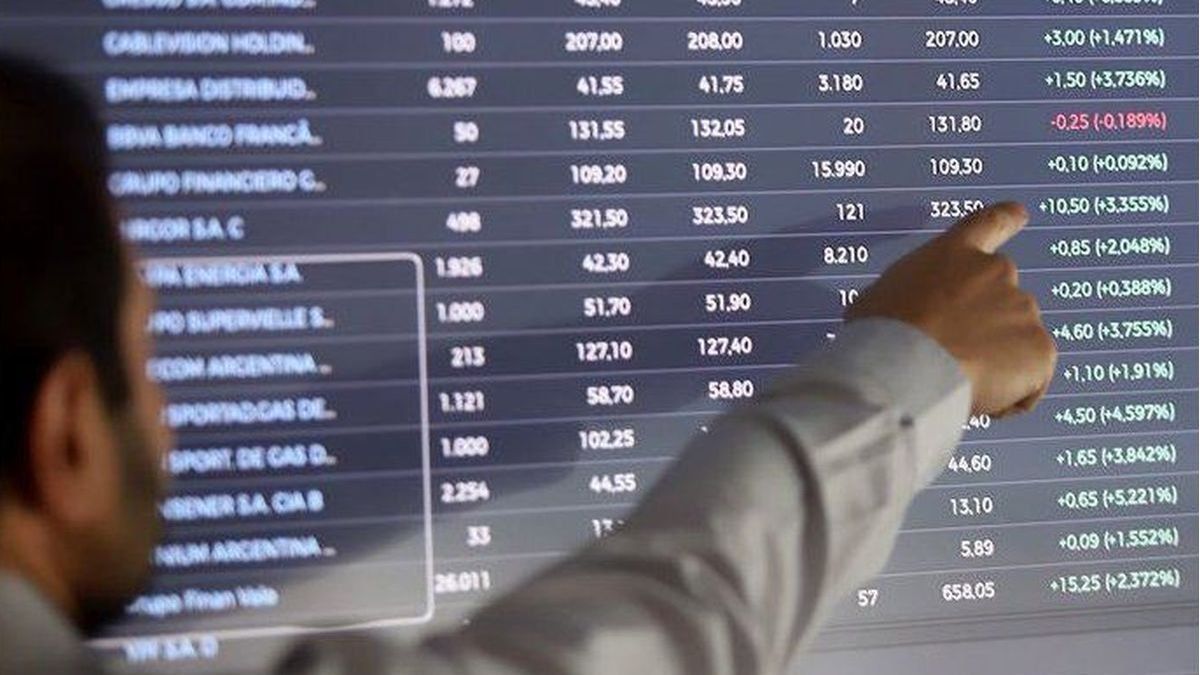“The signs coming from inflation are not very auspicious, at least for the developed economies, since they have been showing signs of resilience that may end up permeating inflation expectations.Balanz synthesized.
The operators were attentive to the Brazilian markets after the electoral victory of Luiz Inácio Lula da Silva, whom the Argentine president, Alberto Fernández, traveled to São Paulo to visit on Monday.
The S&P Merval index of the Buenos Aires stock exchange gained 1.42%, to 149,938.32 pointsas an inflation hedge, to accumulate in October an advance of 7.8% thanks to the interest in energy and financial papers.
The best companies in the local market during this month were YPF, which recorded a resounding rise in 22.1%, followed by the energetic Southern Gas Carrier, with a rise of 17.1%while the podium closes it Northern Gas Carrier with a growth of 13%.
“October continued with the upward trend of last month, ending with a positive balance driven mainly by YPF, which managed to climb more than 20%. The utilities sector showed several exponents among the best, highlighting Transportadora de Gas del Sur, Pampa Energía, Central Port and Transportadora de Gas del Norte”, highlighted from Tavelli Inversiones y Mercados.
Argentine stocks on Wall Street
Shares of Argentine companies listed on Wall Street rose after mixed trading on Monday. Among the increases, Loma Negra papers stood out (+2.9%); Banco Macro (+2.6%) and Transportadora de Gas del Sur (+2.4%). Likewise, in October they closed with rises of up to 19.9% from Tenaris, followed by YPF (19%) and Corporación América (+18.2%).
“The background context remains unfavorable“, stressed Delphos Investment. “The Government continues to face difficulties in managing reserves, which collides with the level of activity on a growing basis.”
Regarding the new import regime (SIRA), an official source clarified that importers can use their own dollars, although “companies cannot make ‘Formation of Foreign Assets’, that is why they cannot buy ‘MEP’ dollars and then go to import It is designed for specific operations, it is not used to import supplies or for consumer goods.”
Wall Street Recovery
After two very negative months for the US markets, in October the main New York stock indices registered a strong upward reaction and the S&P 500 was able to recover a good part of what was lost, closing the month with a positive variation of 7.99%.
In this way, the main benchmark index in the United States registered its second best monthly performance of the year.
In the case of Nasdaq 100, the popular index of technology companies, the rally was weaker and reached 4.15%. What was explained largely due to the adverse context of the sector, which was evidenced in a weak presentation of results of the “Big Tech” with the exception of Apple.
For its part, The Dow Jones continues to be the most solid index of the year and this time it ended the month with a historical appreciation of 13.96%something that had not happened since January 1976, as reported by Invest Online.
Bonds and country risk
In the fixed income market, The month of October was characterized by the rise of sovereign bonds in dollars and little demand for instruments in pesos, especially reflected in the CER curve.
Sovereign bonds, both Local Law (LL) and Foreign Law (LE), registered a strong increase in their price in October of 11.2% and 8.1% on average, respectively.
In this framework, the bonds in dollars that rose the most in October were: Global 2035 (+13.1%); Global 2041 (+11.9%) and Global 2038 (11.8%).
Although there was no macroeconomic news or specific changes in the outlook going forward that could have motivated the rise, from Invest Online they highlighted that “the setting up of positions took place in a context where parities were at historically low values“.
“Therefore, we understand that this increase in demand (reflected in prices) was caused by actors who sought to position themselves already thinking about 2023 and a possible “electoral trade” and not so much caused by a current change in perspectives,” they added.
They further noted that the local peso debt market, specifically the CER curve, came under some stress during the month with new uncertainty about the future of peso debt as 2023 approaches.
To take as a reference, the TX23 bond went from yielding CER-0.7% at the end of September, and at the end of October CER+5.3%, which indicates that no positions have been formed in the month and the market would be transferring risk from the long part of the curve to the short.
In a complex context and pending a new increase in rates by the Federal Reserve, the country risk measured by the JP.Morgan bank rose 63 units, to 2,617 basic points and ended October with a decrease of 195 units after reaching 2,812 points.
Source: Ambito
David William is a talented author who has made a name for himself in the world of writing. He is a professional author who writes on a wide range of topics, from general interest to opinion news. David is currently working as a writer at 24 hours worlds where he brings his unique perspective and in-depth research to his articles, making them both informative and engaging.




